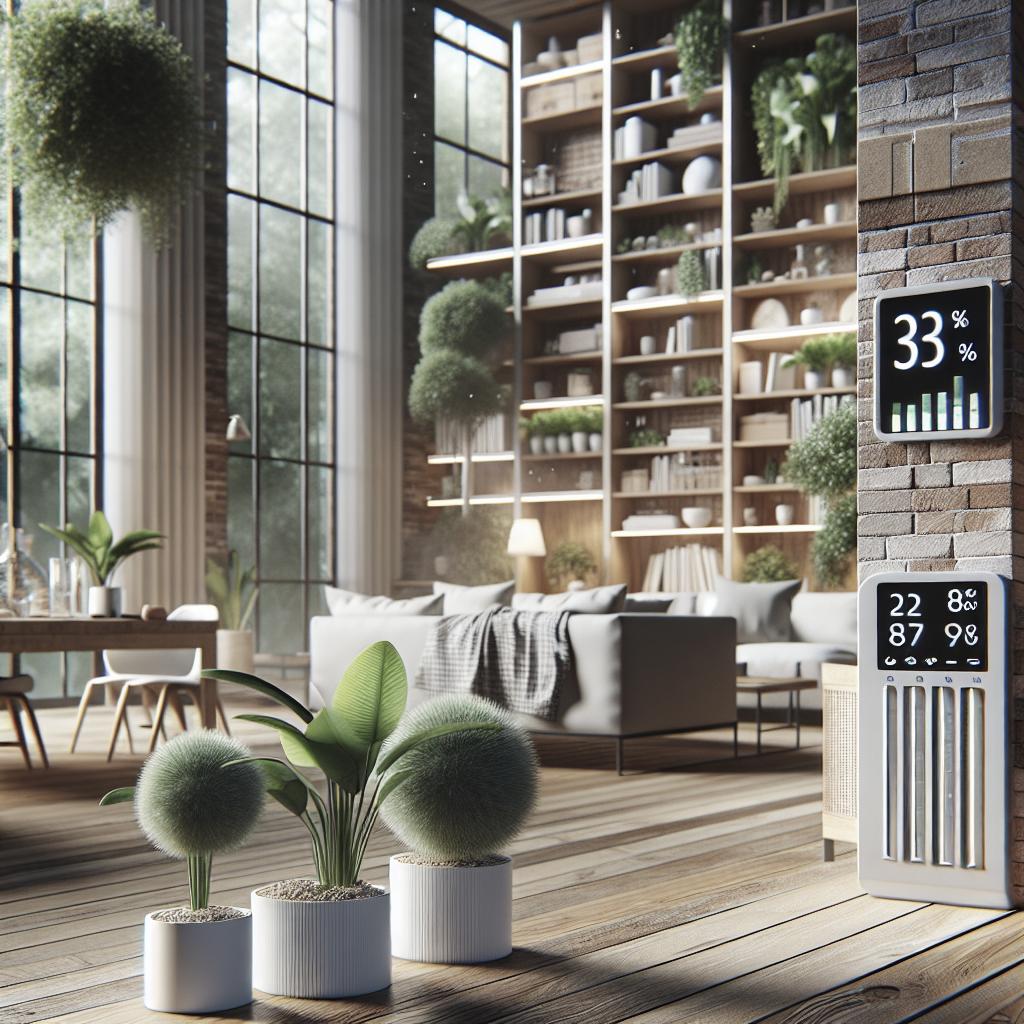“`html
Ensuring Indoor Air Quality in Sustainable Homes
With the rise of eco-conscious living, sustainable homes are gaining popularity. These homes not only focus on conserving energy and resources but also prioritize the health of their inhabitants. A critical component of a healthy home is ensuring good indoor air quality. Poor air quality can lead to various health issues, especially for vulnerable individuals. In this blog post, we will explore various methods to ensure indoor air quality is maintained. From using effective source control to investing in houseplants, we’ll dive into actionable steps that can make a real difference in your living environment. Whether reducing chemical use, switching fuel sources, or improving ventilation, these strategies aim to create a healthier living space that aligns with sustainable living principles.
Source Control
The first step in ensuring good indoor air quality begins with addressing the sources of pollution. Identifying and minimizing pollutants at their source prevents them from infiltrating the living environment. This includes keeping building materials and furnishings with minimal off-gassing of volatile organic compounds (VOCs).
Attention to construction materials is essential—opt for non-toxic paints, sealants, and flooring whenever possible. These components often release harmful chemicals that can impact your indoor environment. Additionally, a key practice is to manage and vent combustion appliances correctly, ensuring they do not release carbon monoxide or other harmful gases indoors.
Reduce Chemical Use
In sustainable homes, reducing the use of chemicals is imperative for maintaining quality indoor air. Consider switching to natural cleaning products as an effective way of minimizing the introduction of chemicals into your living spaces. Many conventional cleaning products harbor ingredients that can evaporate, contributing to poor air quality.
Moreover, personal care products should also be scrutinized, as certain fragrances and sprays release chemicals that may degrade air quality. Opt for natural or hypoallergenic alternatives to further limit your exposure to such pollutants.
Switch up Your Fuel Source
Another method to improve indoor air quality is by re-evaluating your home’s fuel sources. Traditional sources like coal, propane, and natural gas can emit pollutants that degrade air quality. Switching to cleaner fuel sources such as electricity or solar can reduce indoor pollutants and align with sustainable goals.
Consider consulting energy experts to transition to more sustainable options, which in turn can minimize harmful emissions and promote a healthier home setting. Incorporating energy-efficient appliances can also assist in this endeavor.
Improve Ventilation
Ventilation plays a pivotal role in maintaining healthy air quality. By ensuring your home has adequate ventilation systems in place, you allow for the successful exchange of indoor and outdoor air, thereby preventing the buildup of indoor pollutants.
Natural ventilation can be achieved by strategically placing windows and vents to encourage airflow. For more advanced solutions, mechanical ventilation systems like exhaust fans and heat recovery ventilators can efficiently manage air exchange, especially in climates where opening windows is not feasible year-round.
Air Cleaners/Filtration
Installing effective air filtration systems can significantly impact the quality of air inside your home. These systems work by trapping harmful particulates and allergens such as dust, pollen, and mold spores, thus preventing them from circulating in indoor spaces.
HEPA filters are among the most effective, as they manage to capture even the smallest particles. By routinely maintaining these filters, homeowners can ensure that the systems work efficiently, providing cleaner, healthier air.
Get an Air Purifier
Investing in an air purifier is a proactive measure to combat indoor air pollution. Air purifiers come with various technologies such as ionizers and UV filtration that target specific pollutants and enhance air quality.
When choosing an air purifier, consider the size of the area it needs to cover and the specific pollutants you are concerned with. The key is to select a model that fits the needs of your home and family, providing the best results in air purification.
Keep Your Home Clean
A clean home is a healthy home. Regular cleaning helps keep dust mites, pet dander, and other allergens at bay. A routine cleaning schedule utilizing vacuum cleaners with HEPA filters can be an effective strategy.
Additionally, tackle high-moisture areas that can lead to mold growth, ensuring they are well-ventilated and regularly cleaned. Minimizing clutter can also help reduce dust and enable more accessible cleaning practices.
Invest in House Plants
Houseplants not only add aesthetic value to a home but also contribute to improved air quality. Plants such as spider plants, snake plants, and peace lilies are renowned for their ability to absorb toxins and increase oxygen levels.
Maintaining a variety of houseplants can enhance both the environment and the inhabitants’ well-being. However, balance is vital, as overwatering plants can lead to increased humidity and potential mold issues.
Future Prospects
| Strategy | Description |
|---|---|
| Source Control | Identify and minimize pollutants at their source by carefully selecting building materials and furnishings. |
| Reduce Chemical Use | Switch to natural products for cleaning and personal care to minimize chemical introduction in living spaces. |
| Switch up Your Fuel Source | Transition to cleaner fuels like electricity or solar to reduce emissions. |
| Improve Ventilation | Ensure efficient air exchange using both natural and mechanical ventilation systems. |
| Air Cleaners/Filtration | Use HEPA filters to trap pollutants and maintain system efficiency. |
| Get an Air Purifier | Select air purifiers to target specific pollutants effectively. |
| Keep Your Home Clean | Maintain a clean and clutter-free home to reduce allergens and dust. |
| Invest in House Plants | Utilize houseplants to absorb toxins and improve oxygen levels. |
“`
